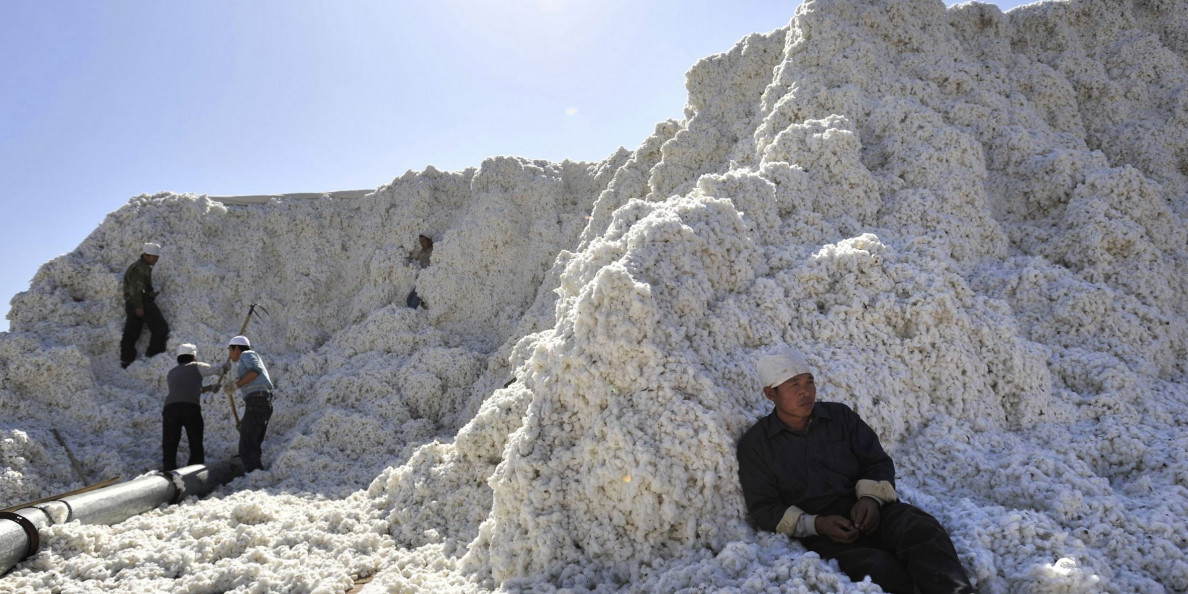After China announces to add additional 25 percent tariffs on U.S. cotton from July 6, basis of international cotton except U.S. moves up. With the sharp depreciation of RMB, cleared foreign cotton prices exceed the Chinese cotton gradually. Though the additional tariffs levied by China and U.S. have no direct impact on textile industry, it influences mills’ procurement of feedstock in long term. Though Chinese and international cotton market is predicted to be strong in medium-to-long term, Chinese mills are likely to be inactive to purchase international cotton in 2018 and the sliding-scale duty quotas may fail to use fully.
1. Imported cotton price move up after China levies additional tariffs on U.S. cotton

CIF prices of imported cotton for nearby shipment mainly refer to the ICE cotton futures, and the imported cotton is offered by adjusting the basis. In early June, China announces to allocate additional 800kt of sliding scale duty quotas in 2018, which expects a higher consumption for cotton in circulation, so basis of imported cotton revises up gradually. On concern about the arriving time, Indian cotton can arrive a lot within this year, so basis of Indian cotton moved up quickly. After China adds additional 25% tariffs on U.S. cotton, U.S. cotton basically cannot enter into China under the terms of ordinary trade, then as cleared foreign cotton still has price edge, China tends to import more international cotton in circulation except U.S. cotton, so basis of Australian cotton, Indian cotton, Brazilian cotton and West African cotton moves up.
2. Cleared foreign cotton prices exceed Chinese cotton prices with sharp depreciation of yuan

Since 2015, China continues to allocate 894kt of cotton quota under 1% tariff. Imported cotton prices that are cleared under 1% tariff are usually lower than Xinjiang cotton, with similar quality, and mills prefer to use Australian and U.S. cotton to produce medium-to-high-end cotton yarn and profits are higher than that of yarn produced by Xinjiang cotton. Therefore, 894kt of quotas can be fully used per year.
However, in 2017/18 season, imported cotton prices have been constantly rising followed by ICE cotton futures and the trade dispute between China and U.S. is going on. RMB exchange rate against USD has been devalued since late April. Therefore, imported cotton prices ticked up quickly, while increment of Chinese cotton was smaller than that of imported cotton, so some cleared foreign cotton prices began to exceed Xinjiang cotton. Mills show lower buying interests.

Currently, additional 800kt of sliding scale duty quotas has not been allocated. Currently, the high imported cotton prices cannot be accepted by domestic mills, and there is no price edge.
| Jul 24,2018 |
products |
prices |
prices under 1% tariff |
prices under sliding-scale duty |
Exchange rate |
| U.S. |
EMOT SM 1-5/32 |
99.38 |
16772 |
17250 |
6.808 |
| U.S. |
C/A SM 1-1/8 |
100.73 |
16997 |
17457 |
6.808 |
| Australia |
GM 1-5/32 |
105.1 |
17725 |
18179 |
6.808 |
| Brazil |
M 1-1/8 |
98.45 |
16616 |
17123 |
6.808 |
| India |
S-6 1-5/32 |
94.82 |
16011 |
16642 |
6.808 |
| Central Asia |
SM 1-5/32 |
103.13 |
17397 |
17854 |
6.808 |
| West Africa |
BOLA/S 1-1/8 |
98.85 |
16683 |
17178 |
6.808 |
| Mali |
Juli/S 1-1/8 |
99.1 |
16725 |
17212 |
6.808 |
| Greece |
M 1-1/8 |
100 |
16875 |
17337 |
6.808 |
| U.S. |
SJV GC 1-7/16 |
152.75 |
25671 |
26046 |
6.808 |
3. Import volumes of cotton yarn and cotton likely to be lower than anticipated
The major contradiction for ICE cotton futures market is still the high unfixed call sales and strong U.S. cotton export sales. ICE cotton futures market is hard to slip, as well as the imported cotton prices. Moreover, with the sharp depreciation of RMB, imported cotton prices are likely to keep higher than Chinese cotton prices before the large arrivals of new cotton in North Hemisphere. Cotton imports are expected to adjust lower. Meanwhile, due to sharp depreciation of RMB, profits for imported cotton yarn narrowed quickly in June and July, and with the anticipation of further depreciation, cotton yarn imports may reduce and traders may turn to Chinese cotton yarn. With the reduction of imported yarn, demand for domestic cotton is expected to rise, favorable to Chinese cotton prices.
4. Chinese cotton prices likely to rise in short run
USDA continues to revise lower 2018/19 U.S. cotton output and international cotton market is expected to keep stable to firm. Therefore, imported cotton prices may keep higher than Chinese cotton prices, leading to less use of sliding-scale duty quotas. Meanwhile, the reduction of imported yarn consumption may lead to lower supply and higher consumption of cotton, pushing up Chinese cotton prices.





